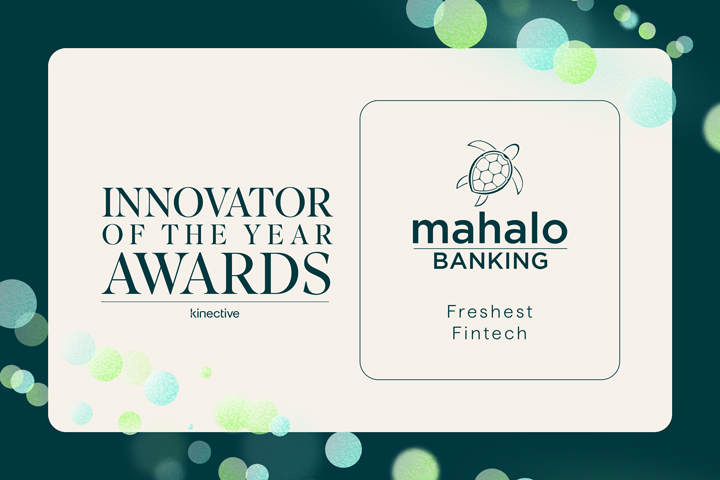This interview is part of our Innovator of the Year series— highlighting the most innovative in banking. Meet the rest of the winners here.
What happens when you go above and beyond to address the diverse needs of clients? Well, you win Innovator of the Year, of course!
Meet Denny Howell (COO) and Jim Stickley (President and CEO) of Mahalo Banking, a Michigan-based mobile and online banking partner for credit unions. We had the opportunity to chat with them to learn more about how they are recognizing and redefining inclusivity within the fintech sector. By embracing neurodiversity and championing inclusivity, Mahalo has stepped up to the plate in supporting all clients navigate the financial world with ease.
What new solutions have you brought to the fintech market within the last three years— and what are their respective potential?
Denny: One of the things we’ve done is build a complete neurodiversity within our application, which is important for a few reasons. You see institutions really concentrating on DEI (diversity, equity, and inclusion) and what we’re really trying to do is help those financial institutions be truly client-centric by offering support for clients who may suffer from dyslexia, ADD, ADHD, or really anything that could hinder them from navigating the platform with ease.
Jim: We knew our solution would address the basics— but we really tried to focus on what wasn’t being addressed. What is something that’s out there that has just completely been forgotten? And it started almost by accident when we learned that Denny was colorblind, which is how a lot of our efforts really got started. One day we were demoing some stuff in a meeting, and Denny was looking at it, and he mentions he couldn’t see what we were seeing. It was in that conversation we learned that there are different types of colorblindness. Denny’s specific colorblindness meant that he couldn’t see what we were showing, even though we were in ADA compliance.
This “AHA” moment led to us researching and discovering there are about 16 different versions of colorblindness, and we now support all of them. It also made us realize that there might be more that we just aren’t seeing— which means clients are having poor experiences even though platforms are technically compliant. Dyslexia— there are fonts specifically designed and sized so you can read it perfectly and it makes perfect sense. Epilepsy— if you have it you have to be extremely careful. We tend to associate that with flashing lights, but animations in web pages can also trigger it. Especially now, you see animations everywhere on platforms because they tend to be more engaging, so we decided to make animations “optional” for clients— so they can actually turn them off. We realized simple things like that really went a long way for clients, so we continued down that path until we made our platform truly accessible.
Our thought process for all of this was— how are you going to be member centric if your member can’t use the mobile solution that you’re providing them?
How is Mahalo engaging with the wider fintech sector and supporting its growth and development?
Denny: We built our platform for us to really engage in all these fintechs, right, and really work with other fintech sectors out there. A good example is Glia. Glia provides financial institutions the ability to interact with their clients at all times through the mobile device, through online banking, through video, and through screen sharing. We have a very easily-built system that allows those integrations to take place and build more fintech partnerships and bring more to the table.
Jim: I think that’s the key, Glea is a great example. It’s any financial institution. When they come to us and they say, hey, we want to work with X, we go, hell yeah, we want to work with them, too. Let’s figure out how we do that, and we get them integrated. We work with any fintech that a financial institution is bringing in. We’re down to clown. We want to play with them.








